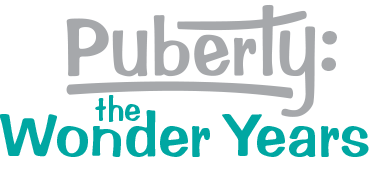
In my work with school districts across the country, I hear a common refrain: adopting a new health curriculum in today’s political climate can feel like navigating a minefield. With more than 22,000 book bans logged since 2021 and a confusing patchwork of state laws causing chaos in districts from Iowa to Tennessee, it’s understandable that many leaders feel stuck. The fear of a lawsuit or a contentious board meeting is creating a chilling effect on education. But the path forward isn’t about avoidance; it’s about proactive preparation. A thorough evaluation process can do more than just check a compliance box—it can build community trust and empower your teachers to succeed.
This framework is designed for proactive curriculum evaluation, helping you ensure compliance, foster transparency, and build the kind of home-school partnership that weathers any political storm.
The New Reality: Why Curriculum Adoption Has Become So Complex
The pressure on district leaders has never been greater. The sheer volume of challenges to educational materials—totaling 22,810 instances across 45 states since mid-2021—is staggering. This environment doesn’t just impact board meetings; it has a direct and measurable “chilling effect” inside the classroom. A recent RAND corporation study found that 65% of teachers nationwide now limit discussions on political and social issues, fearing backlash from parents or administrators.
When laws are vague and politically charged, the result is often chaos. Consider the recent confusion in Iowa, where a new law led some districts to question whether they could legally allow students to use nicknames. This is the practical danger of unclear legislation: it disrupts even the most basic classroom functions and leaves dedicated educators feeling unsupported and exposed. The way forward requires a strategic response, not a reaction driven by fear.
3 Legislative Trends Your Next Curriculum Must Address
To evaluate a curriculum effectively, we first have to understand the legislative landscape it will inhabit. Three major trends are shaping compliance requirements across the country.
The first trend is a push for transparency through parental access laws. This is a central theme in state-level education policy, with a growing statutory trend focused on ensuring parents can easily review and understand all instructional materials. Any curriculum you consider must have transparency built into its very structure, not added as an afterthought.
The second is the rise of state-approved curriculum lists. States like Georgia, Oklahoma, and Tennessee are increasingly exerting control over material selection, limiting local autonomy. This means your next curriculum must either be on an approved list or be so rigorously vetted that it can easily meet the stringent criteria these states demand.
Finally, we need to address the silent requirement of data privacy. As educational tools move online, they fall under an increasingly complex patchwork of state regulations. By the end of 2025, it’s projected that comprehensive state privacy laws will cover approximately 43% of the U.S. population. A modern curriculum adoption process includes a thorough audit of what student data is collected, how it’s stored, and whether its digital components comply with this evolving legal framework.
A 4-Point Checklist for a Compliant—and Effective—Health Curriculum
A proactive evaluation process can transform compliance from a burden into a strategic advantage. This checklist provides a framework for vetting potential curricula to ensure they are legally sound, pedagogically effective, and supportive of your entire school community.
1. Start with Viability and Standards Alignment
Before you address any external pressures, you must confirm the curriculum is educationally sound. The first step is to assess its “curriculum viability”—its capacity to provide students with a genuine opportunity to learn essential content and skills. Does it align with state and national health education standards? Does it present medically accurate, age-appropriate information? A curriculum that fails this first test isn’t worth defending, no matter how compliant it appears to be. Your primary goal is still education, and the right curriculum must meet core instructional objectives first.
2. Prioritize Built-in Transparency and Family Partnership Tools
Given the legislative focus on parental rights, your evaluation should focus on how a curriculum facilitates open communication. Look for a program with built-in tools that make transparency effortless. Does it include materials like Family Activity Sheets that extend learning into the home? Does it provide Parent Preview materials that allow caregivers to review content ahead of time? These features are no longer nice-to-haves; they are essential components of risk management. They proactively build the home-school partnership, answer questions before they become accusations, and demonstrate a commitment to collaboration.
3. Prioritize Teacher Support and Scripting
The “chilling effect” is real, and your teachers are on the front lines. Vague laws make educators fearful of misspeaking or misinterpreting a mandate. A curriculum with clear, vetted, and scripted lesson plans is a direct solution to this anxiety. Scripting doesn’t stifle great teaching; it provides a compliant foundation that supports and empowers teachers to facilitate sensitive discussions with confidence. It ensures a consistent, high-quality delivery of information across every classroom in your district, which is a key element of a defensible program. Look for curricula that pair these scripts with robust professional development and ongoing support.
4. Audit for Data Privacy and Digital Security
A curriculum is more than just its content; it’s also its technology. Your evaluation must include a rigorous audit of any digital components. This means mapping exactly what student data is collected and assessing the security protocols of the provider and any third-party contracts they hold. In a world of ever-changing state privacy laws, you need to ensure your curriculum partner is as serious about digital security as you are. A failure in this area can create a significant institutional risk that has nothing to do with the content being taught.
Beyond Compliance: Building Confidence and Community Trust
Navigating today’s restrictive landscape requires a shift in mindset. A thorough, checklist-driven evaluation isn’t just about avoiding legal trouble or sidestepping controversy. It’s a strategic process for selecting a partner and a program that will help you build a stronger, more resilient school community.
By choosing a curriculum that is pedagogically sound, transparent, and fully supportive of teachers, you do more than meet state mandates. You build confidence in your educators, foster trust with families, and create a true home-school partnership grounded in shared goals for student health and wellbeing. This is the ultimate goal: a foundation of trust that allows education to thrive, regardless of the political climate.
If your district is preparing to adopt a puberty education curriculum built on this foundation of transparency and partnership, help is here. Request a free, 60-day curriculum preview of Puberty: The Wonder Years.



